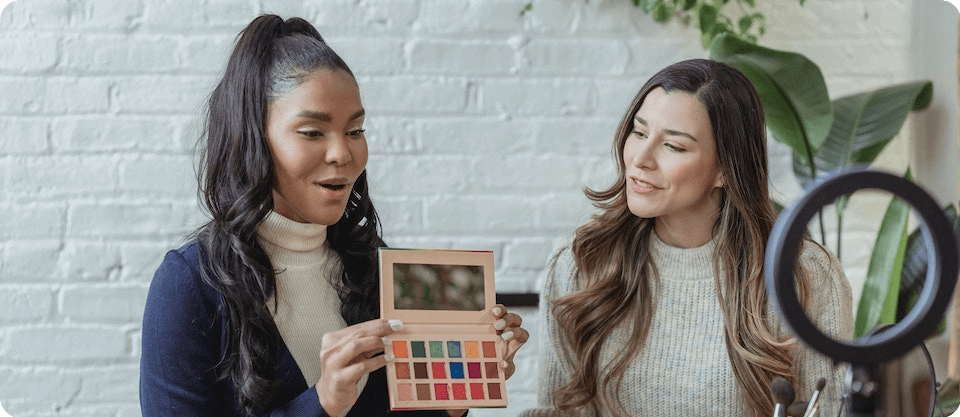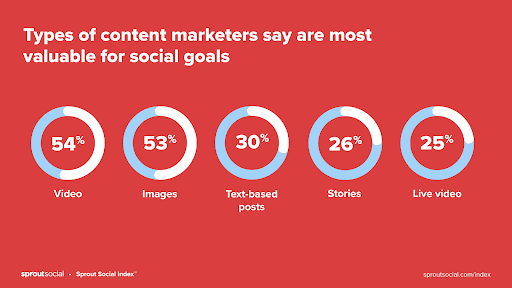
5 Types of Social Media Content to Create for your ideal audience
What is Social Media Content
Social media websites like Facebook, Instagram, Twitter and TikTok are crucial components in most businesses marketing plans. With billions of daily users shared between the sites, social media is a powerful way to introduce your product or service to markets you would otherwise have little way of reaching. No matter how big or small, your business needs a clear footprint on a variety of social media channels to maximise customer reach.
To engage with existing, new and potential customers via social media is a little different from playing an ad on the radio. The main focus in developing a strong social media presence is to create engaging and attractive content. The most common examples are pictures and videos, but there’s much more to it than just making pretty pictures and cool videos. To determine the best social media strategy, let’s talk about the different types of social media content first.
Types of social media content

1. Video
Every day 720 000 hours of video is uploaded to YouTube alone, and with a monthly active user base of over 2 billion users, there’s no doubt that video plays an important role in attracting customers from markets all over the world. If you add other social media channels like Instagram, Facebook (Meta) and TikTok, then the user base covers almost half of the global population.
Video is great for engaging with a new or existing audience and can be a valuable resource for your businesses community engagement. Here are some convincing stats:
Every day 720 000 hours of video is uploaded to YouTube alone, and with a monthly active user base of over 2 billion users, there’s no doubt that video plays an important role in attracting customers from markets all over the world. If you add other social media channels like Instagram, Facebook (Meta) and TikTok, then the user base covers almost half of the global population.
Video is great for engaging with a new or existing audience and can be a valuable resource for your businesses community engagement. Here are some convincing stats:
- Videos on Instagram receive 49% more engagement than images
- Twitter video posts receive 10 times more engagement compared to text based posts
- Users share double the amount of video content than other media types
2. Images
Humans are pretty lazy when it comes to consuming online content, and consequently images are one of the most common types of content to date. We’d much rather look at a picture than read the description, and this is not just a trend in you and me, but in the vast majority of online users.
Instagram and Facebook are two of the most common social sites where users upload content, and your brand shouldn’t be any different. The benefit of images compared to text or video, is that the content can be consumed in an instant. Other media types require more time from the user– and this means there is time for users to move on to the next piece of content before you get your brand’s message across.
This is why images work very well in creating brand awareness. It requires minimal time from the user to recognise the content, and with some repetition, it’s likely that your brand or business will be familiarised to a new audience.
3. Text based posts
Reddit, Facebook, Twitter, Instagram and a host of other social media sites provide the ability to write text based posts. Text based posts generally provide more clarity in terms of services, product availability and updates, or to bolster community engagement by asking questions and responding to audience members’ responses.
Text based posts may not garner as much attention as video or images, but it provides unique opportunities to engage with your audience members on a more personal level. When brands demonstrate an understanding of what customers want and need, 43% of consumers would choose that brand over a competitor.
4. Short form content (stories/reels)
With the rise of TikTok, short form content is becoming increasingly popular. Platforms such as Facebook and Instagram are putting a lot of focus on short form content features such as stories and reels. Stories and reels are one of the most effective ways of engaging with your existing following. Across all the major platforms, stories and reels are highly engaging content pieces with easy-to-manipulate stickers, interactivity, filters and sounds that create a unique experience.
Stories and reels are a great way to create and build on your brand identity, engage with your audience and express a strong brand personality.
5. Live video
Not being able to physically be in a location where an event is taking place has hampered many networking and learning opportunities, but fear no more! The era of live streaming has never been stronger and this trend has now been adopted by practically every social platform. Whether you are discussing fiscal policies on LinkedIn, or dog grooming on Instagram, your audience gets a unique opportunity to ask questions and receive answers from you in real time.
Besides live streaming, the recording of the live session can be uploaded or repurposed to drive more social media marketing and advertising on different channels.
Categories of social media content
Every social media site and app has its own quirks, features and functionalities to help users engage with content. This means that the type of content serves a specific purpose and supports certain features of the application. The five categories of social media content are divided between these five main categories of social media:
Social networking content/user generated content
Social networking is the most traditional form of social media, because they enable user-to-user and user-to-content interactions. These are platforms such as Facebook, Twitter and LinkedIn. On the platforms, users can post and share content in a variety of formats, and even allow pages, groups, reviews and recommendations.
Brands that want to build an audience can target any of these platforms based on their market needs and where their typical customers will likely spend more time. Professionals are likely on LinkedIn, where restaurants are easily discoverable on Facebook.
Photo sharing
Platforms such as Instagram and Snapchat are visually driven. These are typical examples of photo sharing applications, and although the platforms support video, the nature of the platform is aimed at photo-sharing capabilities and interactions. These platforms are much more visual than a blog or twitter update – that’s why we stamp them as photo sharing platforms.
Video Sharing
Video sharing is a great way to keep users engaged with your content for longer periods of time. Whether it’s a live stream, a video series or promotional content, video gives your users insight into your brand values, vision and mission. YouTube and TikTok are both very engaging platforms where users can comment and communicate with the presenter, and in turn this builds community around your brand.
Interactive media
Viewers can respond to interactive material in ways other than comments or likes. In Interactive presented a survey in 2015 suggesting that information is taking on increasingly interactive formats.
Another fascinating fact: The New York Times’ most popular piece of content was a dialect quiz, not a story. If you look at Hubspot’s Facebook page, you’ll notice that the majority of their posts sentences end with a question mark. Even the tiniest attempts to make your information interactive may have a significant impact. Ideally, your internal content marketing team should be developing interactive material such as quizzes, polls, contests, or Q&As for your website and
Blogs/Community building
Blogging is the self-publication of writing, photography, and other material on the internet. Blogging began as a way for individuals to post diary-style entries, but it has quickly been integrated into many businesses’ websites. Blogs include regular updates, casual language, and chances for readers to interact and create a community engagement.
Blog material varies substantially. Travel blogs, for example, may have numerous photographs with few written passages, but political blogs may provide wordy commentary on current events. The success of YouTube and other similar sites gave rise to video blogging, sometimes known as “vlogging.”
What type of social media content converts best?
Social media allows you to reach out to consumers who may be interested in your product as well as encourage them to subscribe to your accounts. It is responsible for converting website visitors on your company’s social media networks into profitability.
Social media conversion is quite analytical. This is because it includes a comprehensive review of your target audience, fans, and followers in terms of age, additional interests, and other variables that resonate with your business.
It enables you to analyse various channels and networks via which your diverse online activity converts more clients, as well as assists in defining ideal customer behaviours and how to convert existing potential audiences into target consumers.
When determining what social media content converts best, bear the three famous stages of conversion in mind.
- The first step is awareness, in which your intended audience is aware of an issue and is aware that you offer a solution. It is critical to approach your audience and communicate with them about their unique problem and how your service or product will solve it.
- The second stage is consideration, where you offer your product or service to consumers and compare it to that of your competitors.
- The third and final stage is conversion. This allows you to present prospects with a very attractive offer in which they know and trust the brand and quality they receive.
If you want to learn more about social media marketing or digital marketing, take a look at our Marketing Courses.



















































